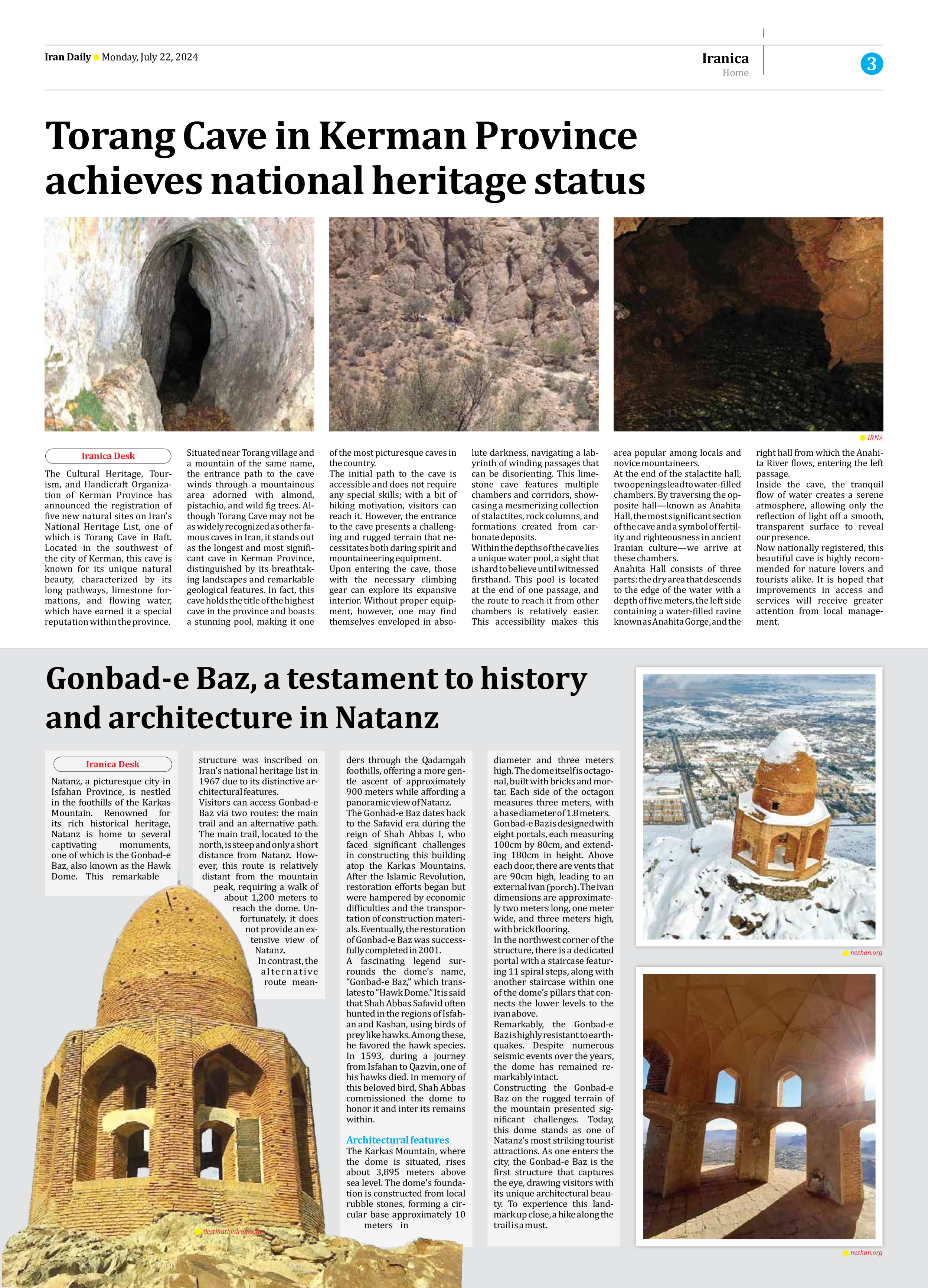
Gonbad-e Baz, a testament to history and architecture in Natanz
Natanz, a picturesque city in Isfahan Province, is nestled in the foothills of the Karkas Mountain. Renowned for its rich historical heritage, Natanz is home to several captivating monuments, one of which is the Gonbad-e Baz, also known as the Hawk Dome. This remarkable structure was inscribed on Iran’s national heritage list in 1967 due to its distinctive architectural features.
Visitors can access Gonbad-e Baz via two routes: the main trail and an alternative path. The main trail, located to the north, is steep and only a short distance from Natanz. However, this route is relatively distant from the mountain peak, requiring a walk of about 1,200 meters to reach the dome. Unfortunately, it does not provide an extensive view of Natanz.
In contrast, the alternative route meanders through the Qadamgah foothills, offering a more gentle ascent of approximately 900 meters while affording a panoramic view of Natanz.
The Gonbad-e Baz dates back to the Safavid era during the reign of Shah Abbas I, who faced significant challenges in constructing this building atop the Karkas Mountains. After the Islamic Revolution, restoration efforts began but were hampered by economic difficulties and the transportation of construction materials. Eventually, the restoration of Gonbad-e Baz was successfully completed in 2001.
A fascinating legend surrounds the dome’s name, “Gonbad-e Baz,” which translates to “Hawk Dome.” It is said that Shah Abbas Safavid often hunted in the regions of Isfahan and Kashan, using birds of prey like hawks. Among these, he favored the hawk species. In 1593, during a journey from Isfahan to Qazvin, one of his hawks died. In memory of this beloved bird, Shah Abbas commissioned the dome to honor it and inter its remains within.
Architectural features
The Karkas Mountain, where the dome is situated, rises about 3,895 meters above sea level. The dome’s foundation is constructed from local rubble stones, forming a circular base approximately 10 meters in diameter and three meters high. The dome itself is octagonal, built with bricks and mortar. Each side of the octagon measures three meters, with a base diameter of 1.8 meters.
Gonbad-e Baz is designed with eight portals, each measuring 100cm by 80cm, and extending 180cm in height. Above each door, there are vents that are 90cm high, leading to an external ivan (porch). The ivan dimensions are approximately two meters long, one meter wide, and three meters high, with brick flooring.
In the northwest corner of the structure, there is a dedicated portal with a staircase featuring 11 spiral steps, along with another staircase within one of the dome’s pillars that connects the lower levels to the ivan above.
Remarkably, the Gonbad-e Baz is highly resistant to earthquakes. Despite numerous seismic events over the years, the dome has remained remarkably intact.
Constructing the Gonbad-e Baz on the rugged terrain of the mountain presented significant challenges. Today, this dome stands as one of Natanz’s most striking tourist attractions. As one enters the city, the Gonbad-e Baz is the first structure that captures the eye, drawing visitors with its unique architectural beauty. To experience this landmark up close, a hike along the trail is a must.







